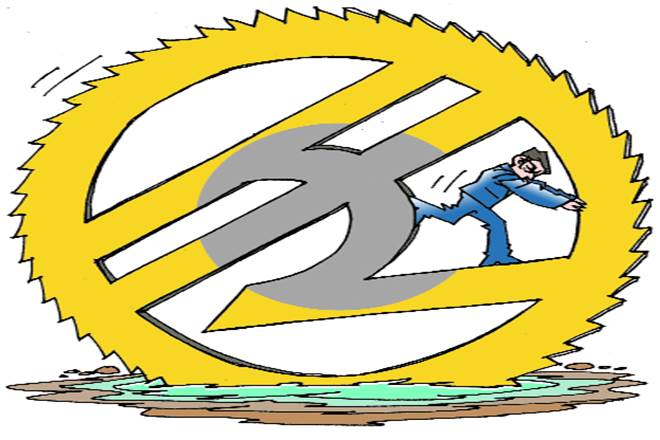Union Budget 2020: A three-year-long and deepening slowdown, falling revenues and nominal GDP, plus a marked descent of every fiscal indicator into the danger zone made the tightrope walk for setting fiscal policy ahead difficult. The government escaped through this by recourse to, well, the FRBM escape clause. This allows deviation up to 0.5% of GDP on some specified grounds, one of which is “structural reforms in the economy with unanticipated fiscal implications”. A resort to this route was widely anticipated. What was not, however, expected was that this would be done for two successive years—FY20, and FY21—which is what the FY21 Budget does. And, then, the fiscal implications of structural reforms were not really unexpected.
Consider the reasons for such a deviation, which, the FRBM law states, must be explicitly set out, along with the laying out of a return path to the prescribed targets before both houses of Parliament. The medium-term fiscal policy-cum-strategy statement in the budget explains that the supply- and demand-side structural reforms to boost economic performance have fiscal implications beyond FY20, and into FY21, and have compelled a revision in the fiscal roadmap. The reforms/measures of FY20 listed therein span MSP hikes, business tax cuts, assistance for MSMEs, textiles sector, startups, NBFCs, and so on, PSB recapitalisation, and the NIP announcement last December. Each of these, however, came with known fiscal implications—e.g., the corporate tax giveaway amounting to `1.45 lakh crore; it is difficult to believe the associated revenue losses or additional costs were not understood! These should have accompanied the announcements in the first place; good practices prescribe such changes or measures be matched by revenue enhancement or offsetting plans as well as future projections. This background makes invocation of the FRBM clause quite unclear. The manner of its recourse to tide over hard times does not seem very responsible or credible.
Even if markets and investors overlook the sidestepping of fiscal rules, they are unlikely to miss the descent of public balances—flows as well as stocks—into a deeper hole. Past fiscal sins, on and off-budget, have pushed up the debt-GDP ratio to 50.3% of GDP in FY20 (projected 48% last year); it is projected near-static at 50.1% in FY21. The general government debt-GDP ratio is now in the 70% region, a risky threshold for investors to become fearful, and rating agencies to contemplate downgrades. Past borrowing practices continue too—liabilities due to extra-budgetary resources (EBRs), currently an estimated 0.7% of GDP, will rise further 10 basis points in the next two years. The well-known, counterproductive impact on interest rates and monetary policy invalidation could well persist.
That said, how does this gain in extra fiscal space help overall demand? Along with a halving of subsidy dues to FCI (to Rs 75,000 billion in FY20 RE against the budgeted Rs 1.51 lakh crore—a further pushing out of government borrowings), the three-fold projected jump in various disinvestment receipts enables the government to increase total expenditure by 13% next year. This lifts a bit to 13.5% of GDP in FY21 against a revised 13.2% last year. It is distributed in an 86.5:13.5 ratio between revenue and capex; the former rises to 11.7% of GDP (from revised 11.5% in FY20), and the latter to 1.8% from 1.7% of GDP last year. The increase of capex share in overall spending is modest, and the bulk continues to be current.
Watch Video: What is Union Budget of India?
This is not much of a boost, but its not contractionary. For now, the government has managed to ‘escape’; it anticipates that structural reforms will revive growth, and investments, with help from monetary easing, and a possible pick up of global growth. But, fiscal management from one year to another on hope and a prayer has stretched public finances to a breaking point. This has occurred in a span of five to six years, in which robust growth and windfall oil revenues accrued. Spending patterns remained unaltered, however; rather, they have worsened.
Unfortunately, so have revenues, especially from a non-stabilising GST reform. The revenue deficit is seen expanding to 2.7% of GDP next year while the primary deficit (less interest payments) is expected to narrow from 0.7% this year to 0.4% of GDP in FY21, which is the same level as in FY19. There is serious need to improve these indicators, if only to recoup some space for policy response. What if there are unexpected shocks?

